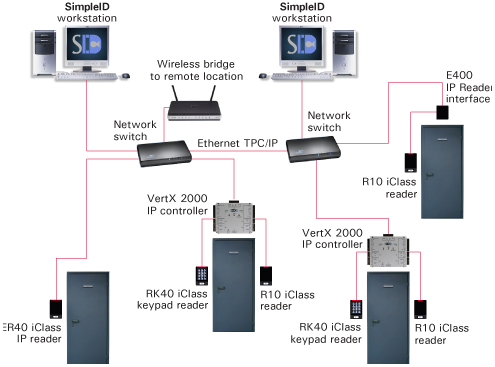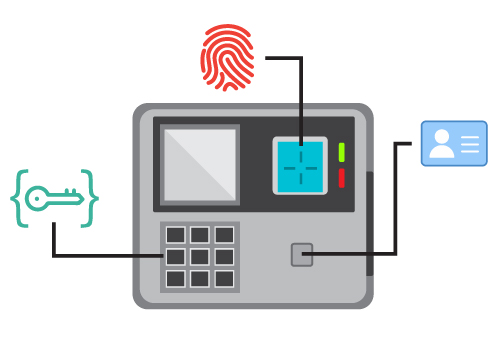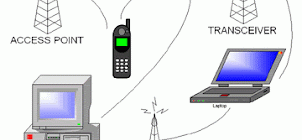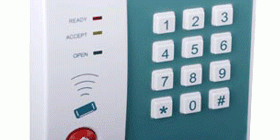
Different types of access control systems
In today’s world, where security is of utmost importance, access control systems play a crucial role in protecting valuable assets and ensuring the safety of individuals. These systems provide a means to control who has access to specific areas, information, or resources. There are various types of access control systems available, each offering unique features and advantages.
One of the most common types of access control systems is the physical access control system. This system utilizes physical barriers, such as doors, gates, or turnstiles, to restrict access to certain areas. It often involves the use of key cards, key fobs, or biometric identifiers to grant or deny entry. Physical access control systems are widely used in corporate offices, hospitals, airports, and other high-security facilities.
Another type of access control system is the logical access control system. This system focuses on protecting electronic or digital information and resources. It typically involves the use of usernames, passwords, and encryption to restrict access to computer networks, databases, or sensitive data. Logical access control systems are commonly used in IT departments, financial institutions, and government agencies.
In addition to physical and logical access control systems, there are also mobile access control systems. These systems leverage mobile technology, such as smartphones, to grant or deny access to various resources. They offer the convenience of allowing individuals to use their mobile devices as credentials, eliminating the need for physical keys or access cards. Mobile access control systems are becoming increasingly popular in smart homes, coworking spaces, and hotels.
Overall, access control systems come in different types to cater to various security needs and requirements. Whether it’s protecting physical spaces, digital information, or granting access through mobile devices, these systems play a vital role in maintaining security and ensuring peace of mind.
Keycard Access Control Systems
In the realm of access control systems, keycard systems have become one of the most popular and widely used types. These systems utilize physical cards or key fobs that are encoded with a unique identifier.
Keycards are typically made of plastic and resemble credit cards in size and shape. Each card is assigned to a specific individual and contains information that allows access to authorized areas.
When an individual presents their keycard to a reader at an access point, the system verifies the unique identifier and grants or denies access based on the assigned permissions. Keycard systems offer a secure and efficient way to manage access to various areas within a facility.
Keycard access control systems provide several advantages over other types of access control. They offer convenience by eliminating the need for traditional keys, which can be easily lost or stolen. Additionally, keycards can be easily deactivated if lost or if an individual no longer requires access.
Furthermore, keycard systems provide an audit trail, allowing administrators to track and monitor access activity. This feature is particularly useful for investigations or in the event of security breaches.
Overall, keycard access control systems offer a reliable and flexible solution for managing access to secure areas. With their ease of use and enhanced security features, they have become a popular choice for many organizations.
Biometric Access Control Systems
Biometric access control systems are a type of access control system that use unique biological traits to verify and grant access to individuals. These systems rely on the use of biometrics, which are physical or behavioral characteristics that can be used for identification purposes.
There are several different types of biometric access control systems, each utilizing a different type of biometric trait. Some common types include:
| Fingerprint Recognition | Uses the unique pattern of ridges and valleys on a person’s fingerprints to verify their identity. |
| Facial Recognition | Analyzes and compares facial features, such as the distance between the eyes, nose, and mouth, to determine if a person is who they claim to be. |
| Iris Recognition | Scans the unique patterns in a person’s iris, the colored part of the eye, to identify them. |
| Voice Recognition | Measures and analyzes various vocal characteristics, such as pitch and tone, to authenticate a person’s identity. |
| Hand Geometry Recognition | Uses the size and shape of a person’s hand, including the length and width of fingers, to verify their identity. |
Biometric access control systems offer a higher level of security compared to traditional access control methods such as keys or passwords. This is because biometric traits are unique to each individual and cannot be easily replicated or stolen.
However, there are also limitations to biometric access control systems. Factors such as environmental conditions, changes in appearance, or physical injuries may affect the accuracy and reliability of biometric readings.
Despite these limitations, biometric access control systems continue to be widely used in various industries and settings, including government buildings, airports, and high-security facilities.
Proximity Access Control Systems
Proximity access control systems are one of the most popular types of access control systems available. These systems use proximity cards or fobs to grant entry to authorized individuals. The proximity cards or fobs contain an embedded radio-frequency identification (RFID) chip, which communicates with the access control reader when brought into close proximity.
One of the main advantages of proximity access control systems is their convenience. Authorized individuals simply need to hold their card or fob near the access control reader, and the system will grant them access. This eliminates the need for physical keys or passwords, making it quick and easy for individuals to enter restricted areas.
Furthermore, proximity access control systems offer a higher level of security compared to traditional lock and key systems. The use of unique cards or fobs makes it difficult for unauthorized individuals to gain access. In addition, these systems can be easily programmed to restrict access to certain areas or to specific time periods, further enhancing security.
Proximity access control systems are commonly used in a variety of settings, such as office buildings, hospitals, airports, and educational institutions. They provide a flexible and efficient way to manage access to different areas within a facility.
In conclusion, proximity access control systems offer a convenient and secure way to regulate access to different areas. Their use of proximity cards or fobs eliminates the need for physical keys or passwords, making it quick and easy for authorized individuals to enter restricted areas. These systems are widely used in various settings and provide an effective solution for access control.
PIN/PAD Access Control Systems
PIN/PAD access control systems are one of the different types of access control systems available. These systems allow users to enter a secure area by entering a personal identification number (PIN) or using a personal access device (PAD) such as a card or key fob.
In PIN-based systems, users are assigned a unique PIN that they must enter on a keypad or touchscreen to gain access. The PIN acts as a password and helps to ensure that only authorized individuals can enter the secured area. This type of access control system is commonly used in office buildings, residential complexes, and other facilities where a high level of security is required.
PAD-based systems, on the other hand, use a personal access device such as a card or key fob. Users are issued these devices, which contain a unique identifier, and they must present the device to a card reader or proximity reader to gain access. These systems are often used in organizations where multiple individuals may need access to the same area, as it is easier to issue and revoke access for individuals by simply deactivating their access device.
Both PIN and PAD access control systems offer numerous advantages over traditional lock and key systems. They provide a higher level of security, as PINs and personal access devices are difficult to duplicate or forge. They also offer more flexibility in managing access, as PINs can be easily changed or deactivated, and access devices can be assigned to specific individuals.
Overall, PIN/PAD access control systems are effective tools for controlling access to secure areas and ensuring the security and safety of individuals and assets. These systems can be customized to meet the specific needs of an organization and provide a reliable and convenient way to manage access control.
Facial Recognition Access Control Systems
Facial recognition access control systems are a type of access control system that uses a person’s facial features to grant them access to a certain area or resources. These systems employ advanced technology to analyze and identify an individual’s unique facial characteristics, ensuring that only authorized individuals are granted access.
One of the main advantages of facial recognition access control systems is their high level of accuracy. These systems can accurately match a person’s face to their stored biometric data, making it difficult for unauthorized individuals to gain access. Facial recognition technology has evolved significantly in recent years, and now offers fast and reliable identification capabilities.
Another advantage of facial recognition access control systems is their convenience. Unlike traditional access control systems that require a physical key or card, facial recognition systems do not require the individual to carry any additional items. This makes it easier and more convenient for individuals to access restricted areas without the need for additional identification devices.
Facial recognition access control systems are also highly secure. The use of biometric data, such as facial features, makes it difficult for unauthorized individuals to impersonate or hack into the system. Additionally, these systems often feature advanced security measures, such as anti-spoofing technology, to further enhance their security.
Overall, facial recognition access control systems offer a unique and highly secure way to control access to sensitive areas or resources. With their high level of accuracy, convenience, and security features, these systems are becoming increasingly popular in various industries and applications.
Magnetic Stripe Access Control Systems
Magnetic Stripe Access Control Systems are one of the many types of access control systems available. These systems rely on the use of magnetic stripes to grant or deny access to certain areas or resources.
Typically, a magnetic stripe access control system consists of a card reader and magnetic stripe cards. The card reader is responsible for reading the information stored on the magnetic stripe of the card, while the magnetic stripe cards contain the necessary data.
When granting access, the card reader reads the information on the magnetic stripe and verifies it against a database. If the information matches and the user is authorized, access is granted. On the other hand, if the information does not match or the user is not authorized, access is denied.
Magnetic stripe access control systems are commonly used in a variety of settings, such as office buildings, hotels, and educational institutions. These systems offer a convenient and efficient way to manage access to different areas, ensuring that only authorized individuals can enter.
One of the benefits of magnetic stripe access control systems is their ease of use. Magnetic stripe cards are relatively simple to issue, and users can easily carry them in their wallets or purses. Additionally, the card readers are also straightforward to install and operate, making these systems a popular choice.
However, magnetic stripe access control systems do have some limitations. For example, the magnetic stripes on the cards can be easily damaged or demagnetized, rendering them unusable. Additionally, these systems may be vulnerable to card cloning or unauthorized duplication, as the information stored on the magnetic stripe can be copied.
Despite these limitations, magnetic stripe access control systems remain a viable option for many organizations. They provide a cost-effective and practical way to manage access, offering a balance between security and convenience.
Keypad Access Control Systems
Keypad access control systems are a popular choice for controlling access to buildings and restricted areas. These systems allow users to enter a unique code using a numeric keypad in order to gain entry. They are widely used in residential properties, commercial buildings, and even vehicles.
One of the key benefits of keypad access control systems is the ability to easily grant or revoke access to individuals. With a few simple steps, administrators can add or delete user codes, providing a high level of control over who can enter a specific area. This makes keypad systems ideal for environments where access needs may change frequently, such as office buildings or shared spaces.

Another advantage of keypad access control systems is the simplicity of their design. With just a numeric keypad, these systems require minimal training to use, making them user-friendly for individuals of all backgrounds. Additionally, keypad systems do not require the use of physical keys or cards, reducing the risk of loss or theft.
Keypad access control systems also offer a high level of security. Unlike traditional lock and key systems, keypad systems can be programmed to require complex codes or even incorporate additional security measures such as biometric verification. This makes it significantly more difficult for unauthorized individuals to gain access.
In conclusion, keypad access control systems provide a secure and convenient solution for controlling access to buildings and restricted areas. With their ease of use, flexibility, and enhanced security features, these systems are a popular choice in a variety of environments.
Smart Card Access Control Systems
Smart card access control systems are one of the different types of access control systems that can be used to secure physical spaces and limit access to authorized individuals. These systems utilize smart cards as a means of authentication and verification.
Smart cards are small plastic cards that contain embedded microchips. These microchips store and process data, making smart cards more secure and versatile than traditional magnetic stripe cards.
To use a smart card access control system, an individual is given a smart card that contains their unique identification information. This information is securely stored on the microchip within the card.
When the individual wants to gain access to a secure area, they must present the smart card to a card reader. The card reader communicates with the microchip on the card to verify the individual’s credentials.
Smart card access control systems offer several advantages. They provide a high level of security as the information stored on the smart card is difficult to counterfeit or replicate. Additionally, smart cards can be programmed to allow different levels of access to different individuals, making them highly customizable.
These systems are commonly used in corporate environments, government buildings, and other locations where access control is of utmost importance. They are often used in conjunction with other security measures, such as biometric identification, to provide an extra layer of protection.
In conclusion, smart card access control systems are a powerful tool for managing access to secure areas. With their advanced technology and high level of security, they offer a reliable and customizable solution for controlling access in various environments.
Mobile Access Control Systems
Mobile access control systems are a type of access control system that allows users to control and manage access to a physical space using their mobile devices. These systems use technology such as Bluetooth, NFC, or biometrics to authenticate users and grant or deny access to a building or specific areas within a building.
There are several benefits to using mobile access control systems. One of the main advantages is convenience. Users no longer need to carry around physical access cards or remember passwords or PINs. Instead, they can simply use their mobile devices, which are often already with them.
Another benefit is increased security. Mobile access control systems can provide additional layers of authentication, such as biometric identifications like fingerprints or facial recognition. This makes it much more difficult for unauthorized individuals to gain access to a building or sensitive areas.
Mobile access control systems can also offer features such as remote management and monitoring. With these systems, administrators can remotely grant or revoke access to individuals, track who enters and when, and receive notifications or alerts in case of any unauthorized access attempts.
In conclusion, mobile access control systems provide a convenient and secure way to control and manage access to physical spaces. By leveraging mobile devices and advanced authentication methods, these systems offer increased convenience, security, and remote management capabilities.
Palm Vein Access Control Systems
Palm vein access control systems are a type of biometric access control system that utilize the unique patterns of veins in a person’s palm to authenticate their identity. These systems provide a highly secure and reliable method of controlling access to sensitive areas.
One of the main advantages of palm vein access control systems is their accuracy and reliability. The unique patterns of veins in a person’s palm are virtually impossible to replicate or forge, making it extremely difficult for unauthorized individuals to gain access. This makes palm vein access control systems an ideal choice for high-security environments where strict access control is essential.
Another advantage of palm vein access control systems is their non-intrusive nature. Unlike some other biometric systems, such as fingerprint or iris scanning, palm vein access control systems do not require physical contact with the person being identified. This can be more hygienic, especially in environments where multiple people need to be identified in quick succession.
Palm vein access control systems also offer a high level of user convenience. Once enrolled in the system, individuals can simply place their palm over a sensor to gain access, without the need for additional identification cards or keys. This can streamline the access process and reduce the risk of lost or stolen credentials.
Overall, palm vein access control systems provide a different, highly secure, and convenient method of controlling access to sensitive areas. Their accuracy, non-intrusiveness, and user convenience make them an ideal choice for a wide range of applications, from corporate and government facilities to healthcare and educational institutions.
Remote Access Control Systems
Remote access control systems are a type of access control system that allow users to control and monitor access to a facility or resource from a remote location. These systems provide convenience and flexibility, allowing authorized individuals to manage access permissions and monitor security remotely.
There are different types of remote access control systems available, each suited for different applications and use cases. Some of the common types include:
- Mobile-based systems: These systems use mobile devices such as smartphones or tablets to control access. Users can use their mobile device to remotely grant or revoke access permissions, receive real-time notifications, and monitor activity logs.
- Cloud-based systems: Cloud-based remote access control systems leverage the power of cloud computing to provide remote access capabilities. Users can manage access permissions, monitor security, and receive alerts through a web-based interface accessible from anywhere with an internet connection.
- Biometric systems: Biometric remote access control systems use biometric identifiers such as fingerprints, facial recognition, or iris scans to authenticate users remotely. These systems offer enhanced security and accuracy in verifying the identity of individuals remotely.
- Wireless systems: Wireless remote access control systems utilize wireless technologies such as Wi-Fi or Bluetooth to enable remote connectivity and control. Users can remotely manage access permissions, monitor security, and receive notifications through wireless communication.
Remote access control systems offer numerous benefits, including increased convenience, improved security, and enhanced flexibility. They are commonly used in various applications, including residential buildings, commercial facilities, industrial sites, and government institutions.
Overall, remote access control systems provide an effective solution for managing and monitoring access to a facility or resource from a remote location. The different types of systems cater to different needs and requirements, ensuring that there is a suitable option available for various applications.
Fingerprint Access Control Systems
Fingerprint access control systems are a type of biometric access control system that use fingerprints to grant or restrict access to a certain area or device. These systems rely on the unique patterns and characteristics of a person’s fingerprints to provide secure and convenient access control.
One of the main advantages of fingerprint access control systems is their high level of security. Each person’s fingerprint is unique, making it difficult for unauthorized individuals to gain access. This type of system is also difficult to counterfeit or replicate, further enhancing its security measures.
Fingerprint access control systems also offer convenience and efficiency. Instead of using keys or cards that can be lost or stolen, individuals can simply present their finger to gain access. This eliminates the need for additional items, saving time and effort for both the user and the system operator.
These systems can be integrated into different types of access control systems, such as standalone devices or networked systems. Standalone fingerprint access control systems are typically used for smaller-scale applications, such as securing a single door or entrance. Networked fingerprint access control systems, on the other hand, can be used to secure multiple areas or devices and can be managed centrally.
Overall, fingerprint access control systems provide a secure and efficient way to control access to various areas or devices. Their unique biometric technology offers high-level security measures while providing convenience and ease of use for both individuals and system operators.
| High level of security | Can be more expensive compared to other types of access control systems |
| Difficult to counterfeit or replicate | May require additional setup and calibration |
| Convenient and efficient | May have limitations for individuals with certain medical conditions |
| Can be integrated into different types of access control systems |
Voice Recognition Access Control Systems
Voice recognition access control systems are a type of access control system that uses voice recognition technology to grant or deny access to a secured area or device. These systems rely on different algorithms and patterns to capture and analyze an individual’s voice and compare it to an authorized voice sample stored in a database.
Compared to other types of access control systems, voice recognition systems offer several advantages. First, they provide a high level of security as the voiceprint of each individual is unique, making it difficult to replicate or forge. Additionally, voice recognition systems are convenient to use, as individuals do not need to carry any physical keys or access cards. Instead, they simply need to speak into a microphone or a smart device that is connected to the system.
There are different types of voice recognition access control systems available in the market. One type is the speaker-dependent system, where the system is trained to recognize the voice of specific individuals. This type of system is commonly used in environments where only a limited number of individuals need access.
Another type is the speaker-independent system, where the system can recognize the voices of any individuals without prior training. This type of system is more flexible and suitable for environments where a large number of individuals require access.
In addition to voice recognition, some systems may also incorporate other biometric authentication methods, such as fingerprint or facial recognition, to enhance security. These multimodal systems provide an extra layer of protection by combining multiple biometric factors for identification.
In conclusion, voice recognition access control systems offer a secure and convenient way to grant or deny access to secured areas or devices. They rely on different algorithms and patterns to analyze an individual’s voice and compare it to an authorized voice sample. With their unique advantages and various types available, voice recognition systems are becoming increasingly popular in various industries.
Q&A:
What are some common types of access control systems?
Some common types of access control systems include card-based systems, biometric systems, keypad systems, and proximity systems.
How does a card-based access control system work?
A card-based access control system typically works by using a card, such as an ID card or a key card, which contains a magnetic stripe or an embedded microchip. The card is required to gain access to a building or a specific area, and it is swiped or inserted into a card reader. The reader then validates the card and grants or denies access based on the permissions assigned to that particular card.
What is a biometric access control system?
A biometric access control system uses unique physical or behavioral characteristics, such as fingerprints, iris patterns, or voice recognition, to grant or deny access. It works by capturing an individual’s biometric data using specialized sensors or scanners, and then comparing it to the pre-registered biometric templates in the system’s database. If there is a match, access is granted; otherwise, access is denied.
What are some advantages of using an access control system?
There are several advantages of using an access control system. Firstly, it enhances security by allowing only authorized individuals to enter specific areas. Secondly, it provides a convenient and efficient way of managing access permissions, as access can be granted or revoked easily. Additionally, it can generate detailed access logs, which can be helpful for monitoring and auditing purposes. Lastly, access control systems can integrate with other security systems, such as CCTV cameras or alarm systems, to provide a comprehensive security solution.






